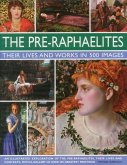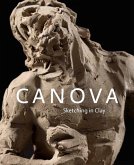This kaleidoscopic study of Antonio Canova (1757-1822), one of the most celebrated sculptors of the Neoclassical era, reconsiders his life, work and artistic legacy in the wake of the two-hundredth anniversary of his death. Pestilli here examines how critics such as Carl Ludwig Fernow and Quatremère de Quincy critically shaped both Canova's work and its reception and delves into the striking similarities between Canova and his renowned predecessor, Gian Lorenzo Bernini. The narrative breathes new life into the sculptor's art by placing it within the rich cultural context in which he and his contemporaries worked. Drawing from a wealth of sources--including hundreds of letters and original drawings--Pestilli examines a range of previously unexplored themes that will enhance the understanding of specialists and art enthusiasts alike. This study highlights Canova as a sculptor whose work will continue to resonate for years to come.
Bitte wählen Sie Ihr Anliegen aus.
Rechnungen
Retourenschein anfordern
Bestellstatus
Storno








